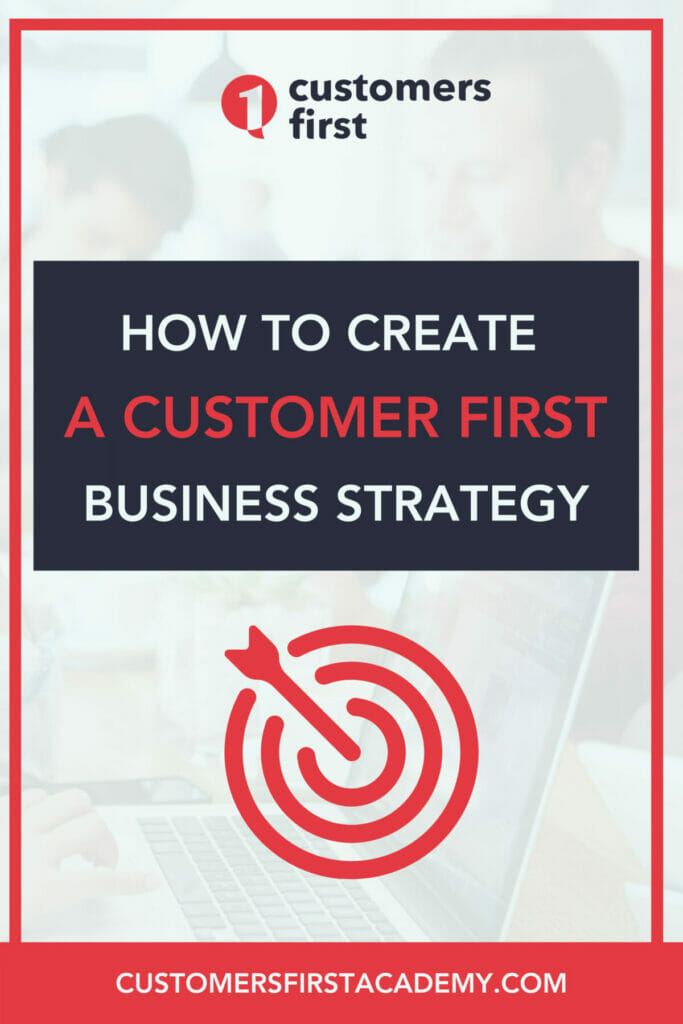How to Create a Powerful Customer First Business Strategy
A customer first business strategy focuses on maximizing business activities to meet customer needs. Sales, operations, and service departments are all geared towards growing customer relationships and providing customer satisfaction.

To keep customers happy it is important to know what their needs are and to best meet those needs. In this article, we will look at the requirements for establishing a customer first strategy for your business and how to implement it. This will allow you to effectively build long-lasting customer relationships that will positively impact your bottom line.
6 Steps to Create a customer first Business Strategy
1. Understand the Customer Journey
To create a customer first strategy you need to know what your customer’s goals and needs are. The best way to understand your customer’s journey through the sales process is by putting yourself in their shoes.
Experience the entire customer journey first-hand from product introduction, decision-making, and purchase to product use and after-sales care. This will easily allow you to identify areas that need adjustment.

A customer first strategy recognizes that the client has certain needs during every stage of the customer lifecycle. These different needs throughout each stage need to be met accordingly. If you only take care of your client during the purchasing stage but neglect to assist them when the product fails to deliver your brand will suffer as a whole regardless of how good the pre-sales service was.
2. Map Out the Customer Purchase Journey
Now that you have pinpointed the customer’s needs throughout their journey with your business you can create a sales cycle. This allows each department to communicate effectively in their respective roles during the customer journey. As you document the sales process consider the following:
- Identify the problem that has drawn the customer to need your product or service.
- Identify how your product or service will solve the problem best for the client.
- Consider each decision-making factor that may lead to the final purchase decision.
- Determine possible pain-points during the actual purchase stage.
- Map the customer experience after they have bought the product and possible scenarios that may require problem-solving.
- Determine how you would foresee an effective after-sales follow-up and maintain customer interaction long-term.

3. Implement Sales Management Tools
Use a sales management tool to align the customer journey and their needs with the required business processes. Using a Customer Relationship Management (CRM) tool will guide you in streamlining every step, enabling you to put the customer first. Not having a streamlined process in place takes the focus off the customer and places it onto a dysfunctional administration process.
A CRM tool can help you put the customer first by:
- Setting up a timeline of procedures that need to happen during certain stages of the buying cycle.
- Keeping a database of customer information, activity logs, and purchase behavior records. This makes it possible to provide customers with personalized service and up-selling suggestions.
- Keeping track of deals and the sales pipeline for prospective clients.

4. Improve Each Stage of the Customer Journey
You have now established your customer buying cycle stages and applied a CRM system. The next step is to improve the customer’s experience during each stage of their purchase. Identify stages of the lifecycle that may be challenging for the customer and how you can ease their experience. Uncomfortable moments for customers may include signing a home loan, going through a medical procedure, or having a car repaired after a bad accident.
Consider how you can make the customer feel comfortable in choosing you as their supplier. It is easy to delight a customer when giving them keys to their new home, or a shiny repaired car. But, consider how you can support customers during the challenging stages of the customer journey as well. This could involve offering them a ride to their work or home after dropping their car for repairs. It could be making sure patients are comfortable in a relaxed environment before a medical procedure. This is key to ensuring repeat business and referrals.
5. Equip Your Team
Assist your team to deliver excellent sales and customer service by equipping them with the necessary customer service training, content, and tools. Having efficient tools and procedures in place allows your service and sales staff to focus on customer satisfaction. They can now avoid unnecessary procedural and administration set-backs, backlogs, and misunderstandings. When your entire team is on the same page about what is needed and how to do it, they can invest in building consistently good client relationships.
6. Customer First Strategy Evaluation
To measure the success of a customer first strategy you need to compare sales and customer satisfaction before and after strategy implementation. You can do this by:
- Evaluating profits and losses. Has revenue increased?
- Checking customer satisfaction through surveys, social media comments, and reviews.
- Assessing customer retention rates through repeat business, lost sales, and complaints.
- Conducting performance reviews.
- Conducting a mystery shopping exercise to ensure staff are adhering to new customer first policies.
Pros and Cons of a Customer First Businesses Strategy
Successful customer first strategy implementation requires planning and consistency to remain effective. The strategy may suit some business models better than others. Pros of implementing a customer first strategy include increased sales, customer loyalty, and upselling opportunities.
Due to increased customer retention, there will be a decrease in expenses to draw new clients.
The cons of implementing a customer first strategy include the initial expenses required for upgrading systems and research. It takes time to train staff, change procedures, and implement new protocols. It may be hard to get your entire team on board with all the changes being made and to convince them of the benefits.
Quick Summary
A customer first business strategy focuses on building positive customer relationships throughout the entire sales cycle.
Steps to create a customer first business strategy are:
- Understand the customer journey
- Map out the customer purchase journey
- Implement sales management tools
- Improve each stage of the customer purchase journey
- Equip your team
- Customer first strategy evaluation
Measure the success of strategy implementation by:
- Evaluating profits and losses
- Checking customer satisfaction metrics through surveys, social media comments, and reviews
- Assessing customer retention rates
- Conducting performance reviews
- Conducting a mystery shopping exercise
Consider whether your business activities are focused on meeting customer needs. Are you ensuring customer satisfaction during every stage of the sales cycle? If this is not yet a priority in your business strategy, you may benefit greatly in the long run from making some small changes to implement a customer first business strategy.
Other Resources:
CustomersFirst Academy offers comprehensive customer service training designed to help you grow your skills and advance your career.
To keep learning and developing your knowledge of customer service, we highly recommend the additional resources below:
Service Marketing 101: How It Works
How to Build an Award-Winning Support Team from Scratch
How to Succeed in a Customer Facing Role
Customer Focus: How to Put Your Customers First

